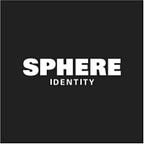Employee onboarding — going beyond borders
The migrant worker population is increasing in volume and variety as nations across the world recognise the value of a global workforce.
People are keen to see cross-border hiring become more available and accessible, but present-day employee onboarding capabilities aren’t well suited for international deployment.
Crossing borders and boundaries
The International Labour Organisation (ILO), estimated a total of 164 million migrant workers in 2018. Between 2013 and 2018, there was an increase of 9% in working migrants — comparable to the population of Zimbabwe.
A growing diversity has also been observed across the global mobility. The migrant worker share of high-income countries dropped by 7% between 2013 and 2018. Meanwhile, there was a sharp rise in that of upper-middle-income nations. The impact is now felt by many more businesses and countries worldwide.
Millennials (expected to make up a third of the planet’s workforce by 2025) are more open to overseas opportunities than any previous generation. A PwC survey showed that 94% of them believe that they will work abroad, more than their parents did, viewing it as a key aspect of their personal development.
On the employer side, the interest in attracting and acquiring international talent is significant. A Deloitte study reports that 68% of organisations agree that a mobile workforce is an enabler of sound business strategies.
Go big or go home
These days, organisations must compete globally to be able to compete at all. The digital explosion gave way to a thriving trade and distribution culture. It paved the path for ‘born global’ firms — those that proactively pursue an international group of customers from the very start.
A diverse, global workforce is beneficial to any organisation, but mainly to those that are product-focused and eager to penetrate new markets. It also ensures that when a company is ready for expansion, they’re more likely to have a grasp of the customs, conventions and thought patterns of their target market. This knowledge, that may otherwise take up employee resources in research and development, can be acquired through a dialogue with the already-established offshore office.
A seamless solution
A sound, secure set-up for data sharing between employees and employers is the building block of a global hiring strategy.
Onboarding is not a uniform universal function, and it varies from employee to employee. For one individual, just the basic verification may be required; for another, a copy of their passport, visa information, certifications, etc. To accommodate everyone, the solution should be designed to read and store a wide variety of identification — to recognise international passports, national ID cards and driving licences.
Companies need to have comprehensive identity functionality or risk missing out on talented employees on account of their system’s inability to check IDs from certain countries.
Given the varying nature of policies and processes, time-zones and the lack of face-to-face contact, onboarding on an international scale is fundamentally more complex than doing so locally. Hence the need for efficiency. Online forms and the sharing and storing of documents cause friction and frustration, while increasing security hazards and the possibility of human errors. Ideally, an onboarding solution should not require people or personnel to perform any typing at all.
With global recruitment, there is an alignment of interests for businesses and employees; but onboarding processes need to be optimised to be people-centric and complement the digital age. There must come a time when any individual can be effortlessly hired from anywhere in the world. The dismissal of paperwork is a good place to start.
